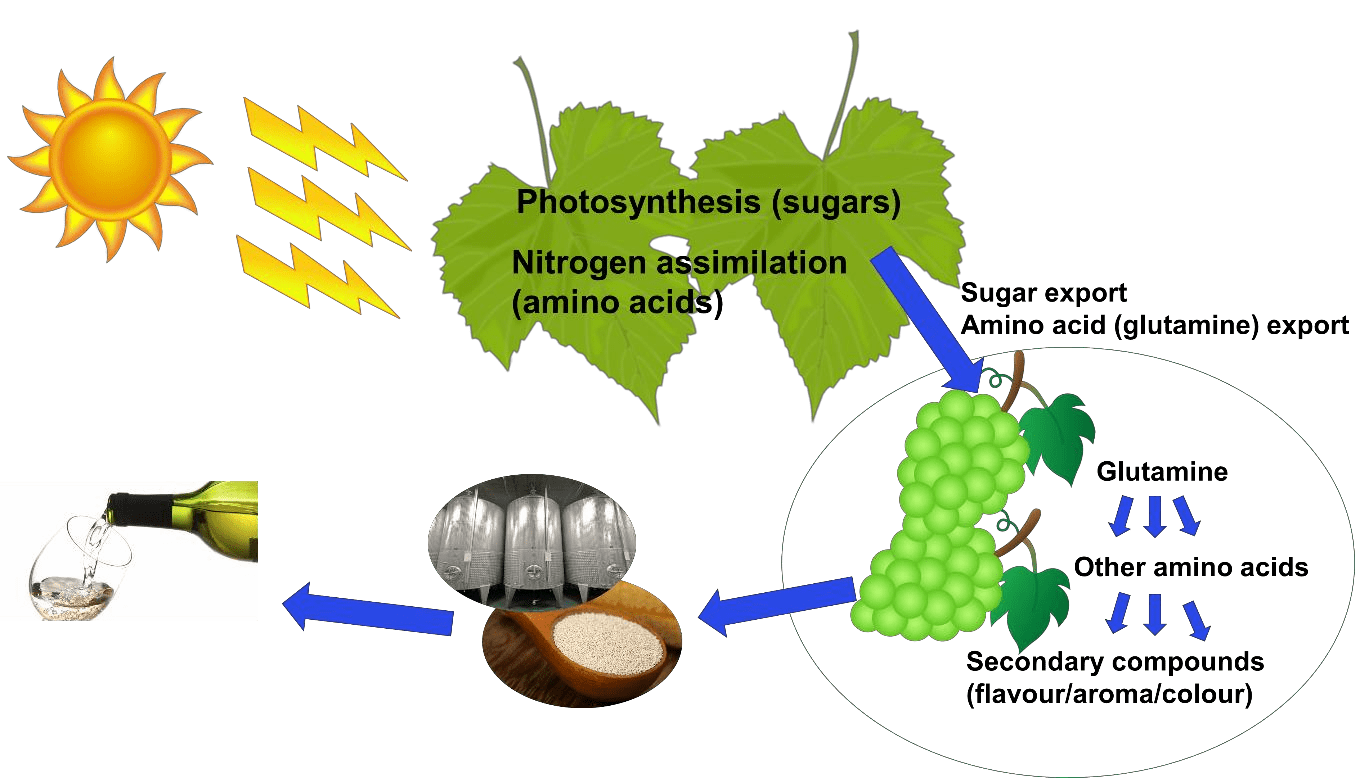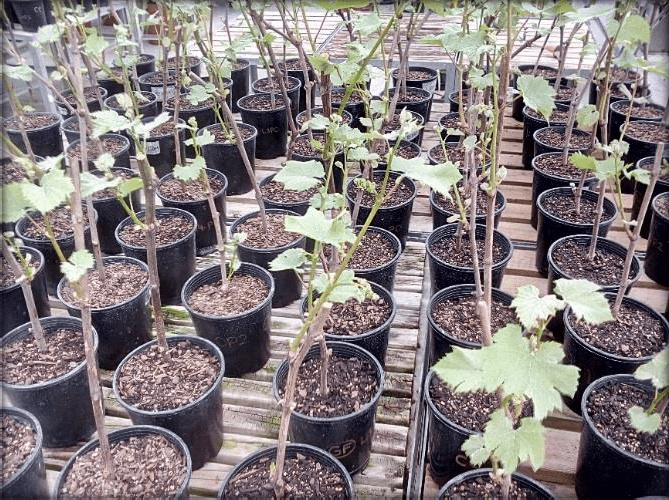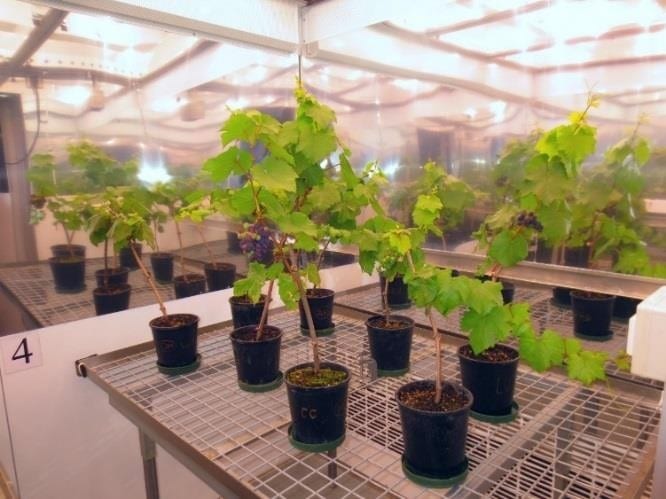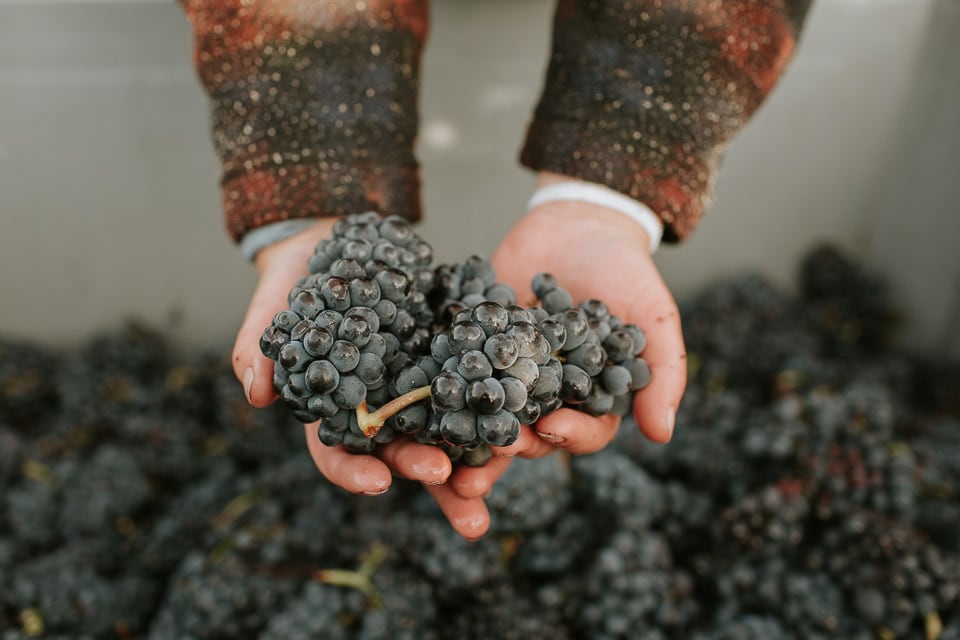Understanding berry biochemistry is crucial to unravelling the Pinot Noir yield vs quality nexus.
Scott Gregan, Amber Parker, Rainer Hofmann, Brian Jordan
Introduction
A major goal of the current Pinot Noir research is to optimise yield and quality with respect to vineyard management practices. The so-called “yield/quality seesaw” has become an important focus due to the apparent trade-off between these two production parameters. Attempts to maximise one (vine yield, for example), often leads to less than desirable impacts on the other (grape quality). An ideal result would be for viticulturists and winemakers to target an appropriate yield in the vineyard and have confidence in their management practices to deliver quality fruit for an exceptional wine product. When it comes to Pinot noir, optimising the yield-quality seesaw is of interest as production costs for this variety can be higher than others.
Step changes in agriculture and the ability to deliver outstanding outcomes, comes from the generation and sharing of new models and concepts. This is where the role of research comes in. The transfer of concise information backed by evidence-based investigations are key to this. Industry participants and individual vineyards are then very capable of deciding themselves, whether or not these “new ideas” can be beneficial to their own vineyard management strategies.
The grapevines growing strategy
From a production perspective, we first tend to think of grapevines as the suppliers of the raw materials (grapes) for wine-making. But ultimately, from a plant biology point of view it is important to consider a leaf, or grape, or any other grapevine tissues in terms of their requisite biological functions. Therefore, a comprehensive understanding of a plant’s strategy, – the trade-off between production (yield) and protection (defence which results in changes in secondary metabolism) – is the key to understanding and then potentially modulating yield and quality components.
Plant metabolic pathways are directed by leaves which are the ‘source’ of primary and secondary compounds; bunches act as key ‘sinks’ in the grapevine which depend on the production of metabolites from source leaves. The grapevine also has other competing sinks that may draw upon these metabolites and include the roots, shoot tips, young leaves, and lateral shoots, leaves, maturing canes and perennial wood. We additionally need to go beyond thinking about the above ground components of the source-sink impact on metabolism and also consider vine balance, whereby the root system may play a role.
Grape berries are ultimately the next generation (the embryos in the seeds) of the grapevine, with the ripening berry there to ensure that reproductive growth is successful. Additionally, as the grapevine is a perennial woody plant, during the winter (dormant) season, the vine is wholly dependent on stored reserves of carbohydrate (sugars), which are mobilised for early shoot and leaf development in the new growing season. These biological facts are well illustrated when following the movement of sugars in the different plant organs, in carbohydrate partitioning experiments for example.

Figure 1. The majority of a grapevines photosynthesis and nitrogen assimilation occurs in the leaves, the products of which (sugars and amino acids, for example) are exported to the surrounding sinks. In the grape berries themselves, significant modification of these primary metabolites produce important secondary (quality) compounds.
The research strategy
Taking into account the grapevines developmental strategy, it is clearly apparent that major biochemical factors should be central to our research approach. The regulation of primary metabolites (sugars, amino acids) is directed by photosynthesis and nitrogen metabolism processes, and can be seen as the driver of quantity (yield). The regulation of secondary metabolism (anthocyanins, phenolic compounds) is tightly coupled to primary metabolism (amino acids are precursors to a multitude of secondary metabolites), and simplistically speaking, can be thought of as the key to quality aspects.
Therefore, addressing this concept of yield vs quality is a key component in the recent Pinot Noir programme and has generated several specific avenues of viticulture-relevant research that we are undertaking at Lincoln University. These key objectives of the programme investigate factors that regulate yield and berry quality of Pinot noir production:
- To examine how yield and quality may be influenced by viticulture practices that modify competing sinks and LA:FW
- To examine how variations in bunch microclimate through changes in light and temperature, regulate grape berry
Generally, grapevines are in a vineyard ecosystem in which vine development and grape ripening are influenced by the soil and environment surrounding the vine. This can be a challenging experimental system to work under, being at “the mercy of the elements”. We are therefore using a potted vine system for experiments, whereby, depending of the conditions required, environmental parameters (light, temperature, soil texture) and source- sink components (root volume, leaf area to fruit weight ratio) can be accurately controlled through the use of plant growth chambers and greenhouses.
The first years of trials have been carried out where the competing sink of root volume was manipulated by changing the pot size. Data was collected regarding the partitioning of carbohydrates to above and below ground organs (via the measuring biomass of roots, shoots, leaves and bunches). Additionally, potted vine experiments were carried out investigating bunch microclimate, using controlled environment facilities at Lincoln University. The collected grape bunches (fruit) will be analysed for primary metabolites and quality (secondary) compounds.


Figure 2. Pinot Noir potted vines for used in greenhouse and controlled environment experiments.
Conclusions
In their undertaking, our research aims to increase the current knowledge of Pinot Noir physiology and biochemistry, with the end goal of maintaining or enhancing berry quality being at the forefront of our research considerations.
There are clearly intricate communication and regulatory mechanisms between the sink and source organs in grapevines. Learning more about the integral control processes will aid our understanding of the plant responses to vineyard management and environmental parameters. Ultimately, it is more desirable to recognise and operate with the vines and their metabolic processes, in order to establish if we can modify responses and modulate the yield quality seesaw.
This article first appeared in the August/September 2019 issue of New Zealand Winegrower magazine

















